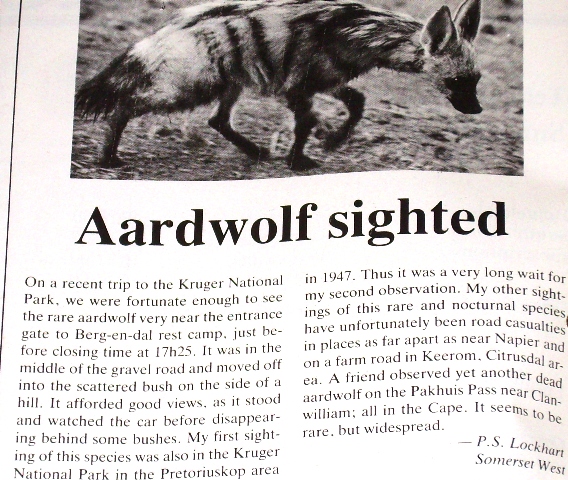
Aardwolf
Re: Aardwolf
Aardwolf Proteles cristata
Kingdom Animalia
Phylum Chordata
Class Mammalia
Order Carnivora
Family Hyaenidae
Genus Proteles
Description
Dog-like in appearance, the aardwolf (Proteles cristata) is a hyaena characterised by a distinctive sloping back, large, pointed ears and a long mane running from the back of the head to the tail. Varying from pale yellow to almost red in colour, the aardwolf has thick under-fur covered with denser guard hair. This coat is patterned with regular black stripes – three on the body and one or two on both the fore- and hind-quarters, while the legs and neck may also be marked with irregular stripes and spots. The aardwolf has a slender head and neck with a grey or black muzzle.
Size
Head-body length: 55 - 80 cm
Shoulder height: 48 - 50 cm
Tail length: 20 - 30 cm
Weight: 9 - 14 kg
Biology
The aardwolf is a primarily nocturnal and solitary species. With a home range of one to four square kilometres, it is highly territorial and defines its territory by extensive scent marking. Upon encountering other aardwolves, it will raise its mane as a warning sign until recognition has been established. Fights for territory do sometimes occur between aardwolves, and with other species, particularly jackals; in these instances the aardwolf may utter a deep-throated growl or roar, despite being generally silent at other times.
The aardwolf has a highly specialised diet consisting almost exclusively of harvester termites (Trinervitermes species), and is able to tolerate the toxic secretions of the termite soldiers. In the summer, as many as 3,000 termites may be consumed each night, while in the winter, termites are much scarcer and only around a fifth of this number will be consumed, resulting in a dramatic loss of body mass. The aardwolf’s cheek teeth are little more than flattened pegs and are of little use; instead, it has a long, sticky tongue that is effective at licking termites from the soil surface. Unlike the aardvark, the aardwolf lacks large claws to dig up termites so relies solely on this method of feeding.
Females come into season in late June and often mate within the first two weeks of July. Following a gestation of around 90 days, typically two to four cubs are born within a den, where they remain for the next month. During this time, the male plays a role in caring for the cubs by guarding the den, often from territorial attacks by jackals. Between three and four month of age, the cubs begin to forage throughout the territory with the adults and are weaned at the end of this period. Cubs generally leave the home territory at about a year of age and seldom return.
Range
The aardwolf occurs in two discrete populations; the southern population covers most of southern Africa, Angola, Zambia and Mozambique, and the northern population extends across Tanzania, Uganda, Somalia, Sudan, Ethiopia and Egypt.
Habitat
The aardwolf primarily inhabits open, grassy plains but can survive almost anywhere which has an average annual rainfall of 100 to 800 millimetres, although it does avoid forested areas.
Kingdom Animalia
Phylum Chordata
Class Mammalia
Order Carnivora
Family Hyaenidae
Genus Proteles
Description
Dog-like in appearance, the aardwolf (Proteles cristata) is a hyaena characterised by a distinctive sloping back, large, pointed ears and a long mane running from the back of the head to the tail. Varying from pale yellow to almost red in colour, the aardwolf has thick under-fur covered with denser guard hair. This coat is patterned with regular black stripes – three on the body and one or two on both the fore- and hind-quarters, while the legs and neck may also be marked with irregular stripes and spots. The aardwolf has a slender head and neck with a grey or black muzzle.
Size
Head-body length: 55 - 80 cm
Shoulder height: 48 - 50 cm
Tail length: 20 - 30 cm
Weight: 9 - 14 kg
Biology
The aardwolf is a primarily nocturnal and solitary species. With a home range of one to four square kilometres, it is highly territorial and defines its territory by extensive scent marking. Upon encountering other aardwolves, it will raise its mane as a warning sign until recognition has been established. Fights for territory do sometimes occur between aardwolves, and with other species, particularly jackals; in these instances the aardwolf may utter a deep-throated growl or roar, despite being generally silent at other times.
The aardwolf has a highly specialised diet consisting almost exclusively of harvester termites (Trinervitermes species), and is able to tolerate the toxic secretions of the termite soldiers. In the summer, as many as 3,000 termites may be consumed each night, while in the winter, termites are much scarcer and only around a fifth of this number will be consumed, resulting in a dramatic loss of body mass. The aardwolf’s cheek teeth are little more than flattened pegs and are of little use; instead, it has a long, sticky tongue that is effective at licking termites from the soil surface. Unlike the aardvark, the aardwolf lacks large claws to dig up termites so relies solely on this method of feeding.
Females come into season in late June and often mate within the first two weeks of July. Following a gestation of around 90 days, typically two to four cubs are born within a den, where they remain for the next month. During this time, the male plays a role in caring for the cubs by guarding the den, often from territorial attacks by jackals. Between three and four month of age, the cubs begin to forage throughout the territory with the adults and are weaned at the end of this period. Cubs generally leave the home territory at about a year of age and seldom return.
Range
The aardwolf occurs in two discrete populations; the southern population covers most of southern Africa, Angola, Zambia and Mozambique, and the northern population extends across Tanzania, Uganda, Somalia, Sudan, Ethiopia and Egypt.
Habitat
The aardwolf primarily inhabits open, grassy plains but can survive almost anywhere which has an average annual rainfall of 100 to 800 millimetres, although it does avoid forested areas.
- Lisbeth
- Site Admin
- Posts: 67384
- Joined: Sat May 19, 2012 12:31 pm
- Country: Switzerland
- Location: Lugano
- Contact:
Re: Aardwolf
The more termites, the merrier the aardwolves
By DUR
Posted on 08 October 2014
What do aardwolves and whales have in common? Both are extremely picky eaters, to the point of only
feeding on one foodstuff over and over again. As is the case with some whales and the plankton they eat,
aardwolves will rather eat less than diversify their menus to include anything other than their favourite
termites.
This is one of the findings made by aardwolf researcher Dr Low de Vries of the University of Pretoria’s
Mammal Research Institute, after studying this smallest member of the Hyaenidae family for six years. In the
process he has completed the most comprehensive study to date about what aardwolves eat and how they
share their home and feeding ranges with others of the same species.
De Vries will graduate with a doctorate in Zoology from the University of Pretoria in September. He will not
attend the ceremony though, as he is fulfilling a long-held dream to spend a year as a member of South
Africa’s annual research team on Marion Island. He is collecting data on this sub-Antarctic island about the
ecology and population dynamics of elephant seals, two species of fur seal and killer whales
For his PhD work, though, De Vries spent many a cold night and warm day on the Benfontein Nature
Reserve near Kimberley in the Northern Cape, either catching termites and ants in pitfalls or collecting
aardwolf scat to study and investigate in the laboratory at the University of Pretoria. In the process he also
developed a new method to examine scat thoroughly.
Termites are not very nutritious, and during the colder months they are relatively inactive. Therefore, notesDr De Vries, ‘In theory, aardwolves are too large an animal to be able to sustain themselves on termites
alone, but I have found that the abundance of termites dictates many aspects of their ecology … Few other
mammals are as highly specialised and selective in their diet as the aardwolf.’
De Vries is the first researcher to show that aardwolves do nibble on the odd scorpion at times. He also
confirmed that these shy animals will try out a large type of spider called a solifugid or camel spider.
However, he found that aardwolves still rely almost completely on termites (Trinervitermes trinervoides) for
sustenance. They do not readily switch to other prey, even in times when termite numbers are low.
‘Aardwolves are capable of feeding on a much larger variety of prey than previously thought, if they wanted
to,’ he explains. ’However, instead of incorporating more types of prey into their diets during the dry months
when termite numbers are low, they lower their metabolic rate and can lose up to 20% of their body mass.’
Aardwolves are only found in areas where termites also occur. ‘The general size of an aardwolf’s home
range is actually larger than would be expected for an animal of its size, possibly to ensure that there’s
enough of its food source available or to ensure adequate mating opportunities,’ he muses.
De Vries says that the more termite mounds there are in an area – irrespective of their size – the smaller the
animal’s home range tends to be.
‘Aardwolf home ranges will vary across South Africa, depending on the abundance of termites,’ he says. De
Vries also found that aardwolves are quite neighbourly and allow home ranges to overlap. Males also tend
to share dens. This is contrary to previous research done in the 1980s that showed that aardwolves could be
quite aggressive towards neighbours from adjacent home ranges.
Through his research De Vries also made interesting findings about the insects, spiders and scorpions that
live in arid regions. He noted how temperature rather than rainfall has a bigger influence on their abundance
and the diversity of species – quite the reverse from what is found in habitats such as forests. The finding is
of importance considering that animals such as the aardwolf, aardvark, bat-eared fox and yellow mongoose
rely almost solely on arthropods as their main meals, and in view of the fact that arid parts of South Africa
are thought to experience higher temperatures and drier conditions as a result of global warming.
‘Aardwolves and other insectivorous animals might face a decrease in food availability due to climate
change, which might influence their distribution and survival,’ predicts De Vries.
Media enquiries: Nicolize Mulder; Department of University Relations, University of Pretoria
Tel: +27 12 420 3023 / +27 83 709 3041; Email: nicolize.mulder@up.ac.za
Dr Low de Vries; jldevries@zoology.up.ac.za
Note that Dr De Vries will be part of the SA research mission on Marion Island until April 2015.
http://web.up.ac.za/pdfs/8641_The%20mor ... wolves.pdf
By DUR
Posted on 08 October 2014
What do aardwolves and whales have in common? Both are extremely picky eaters, to the point of only
feeding on one foodstuff over and over again. As is the case with some whales and the plankton they eat,
aardwolves will rather eat less than diversify their menus to include anything other than their favourite
termites.
This is one of the findings made by aardwolf researcher Dr Low de Vries of the University of Pretoria’s
Mammal Research Institute, after studying this smallest member of the Hyaenidae family for six years. In the
process he has completed the most comprehensive study to date about what aardwolves eat and how they
share their home and feeding ranges with others of the same species.
De Vries will graduate with a doctorate in Zoology from the University of Pretoria in September. He will not
attend the ceremony though, as he is fulfilling a long-held dream to spend a year as a member of South
Africa’s annual research team on Marion Island. He is collecting data on this sub-Antarctic island about the
ecology and population dynamics of elephant seals, two species of fur seal and killer whales
For his PhD work, though, De Vries spent many a cold night and warm day on the Benfontein Nature
Reserve near Kimberley in the Northern Cape, either catching termites and ants in pitfalls or collecting
aardwolf scat to study and investigate in the laboratory at the University of Pretoria. In the process he also
developed a new method to examine scat thoroughly.
Termites are not very nutritious, and during the colder months they are relatively inactive. Therefore, notesDr De Vries, ‘In theory, aardwolves are too large an animal to be able to sustain themselves on termites
alone, but I have found that the abundance of termites dictates many aspects of their ecology … Few other
mammals are as highly specialised and selective in their diet as the aardwolf.’
De Vries is the first researcher to show that aardwolves do nibble on the odd scorpion at times. He also
confirmed that these shy animals will try out a large type of spider called a solifugid or camel spider.
However, he found that aardwolves still rely almost completely on termites (Trinervitermes trinervoides) for
sustenance. They do not readily switch to other prey, even in times when termite numbers are low.
‘Aardwolves are capable of feeding on a much larger variety of prey than previously thought, if they wanted
to,’ he explains. ’However, instead of incorporating more types of prey into their diets during the dry months
when termite numbers are low, they lower their metabolic rate and can lose up to 20% of their body mass.’
Aardwolves are only found in areas where termites also occur. ‘The general size of an aardwolf’s home
range is actually larger than would be expected for an animal of its size, possibly to ensure that there’s
enough of its food source available or to ensure adequate mating opportunities,’ he muses.
De Vries says that the more termite mounds there are in an area – irrespective of their size – the smaller the
animal’s home range tends to be.
‘Aardwolf home ranges will vary across South Africa, depending on the abundance of termites,’ he says. De
Vries also found that aardwolves are quite neighbourly and allow home ranges to overlap. Males also tend
to share dens. This is contrary to previous research done in the 1980s that showed that aardwolves could be
quite aggressive towards neighbours from adjacent home ranges.
Through his research De Vries also made interesting findings about the insects, spiders and scorpions that
live in arid regions. He noted how temperature rather than rainfall has a bigger influence on their abundance
and the diversity of species – quite the reverse from what is found in habitats such as forests. The finding is
of importance considering that animals such as the aardwolf, aardvark, bat-eared fox and yellow mongoose
rely almost solely on arthropods as their main meals, and in view of the fact that arid parts of South Africa
are thought to experience higher temperatures and drier conditions as a result of global warming.
‘Aardwolves and other insectivorous animals might face a decrease in food availability due to climate
change, which might influence their distribution and survival,’ predicts De Vries.
Media enquiries: Nicolize Mulder; Department of University Relations, University of Pretoria
Tel: +27 12 420 3023 / +27 83 709 3041; Email: nicolize.mulder@up.ac.za
Dr Low de Vries; jldevries@zoology.up.ac.za
Note that Dr De Vries will be part of the SA research mission on Marion Island until April 2015.
http://web.up.ac.za/pdfs/8641_The%20mor ... wolves.pdf
"Education is the most powerful weapon which you can use to change the world." Nelson Mandela
The desire for equality must never exceed the demands of knowledge
The desire for equality must never exceed the demands of knowledge
- Richprins
- Committee Member
- Posts: 75960
- Joined: Sat May 19, 2012 3:52 pm
- Location: NELSPRUIT
- Contact:
Re: Aardwolf
Very good indeed! 
Please check Needs Attention pre-booking: https://africawild-forum.com/viewtopic.php?f=322&t=596
- PJL
- Posts: 2825
- Joined: Mon Jan 13, 2014 10:12 am
- Country: South Africa
- Location: Port Elizabeth
- Contact:
Re: Aardwolf
Perhaps one of the best parks to spot aardwolf is Mountain Zebra National Park. We have seen them on a few visits, this one being on the Rooiplaat Loop
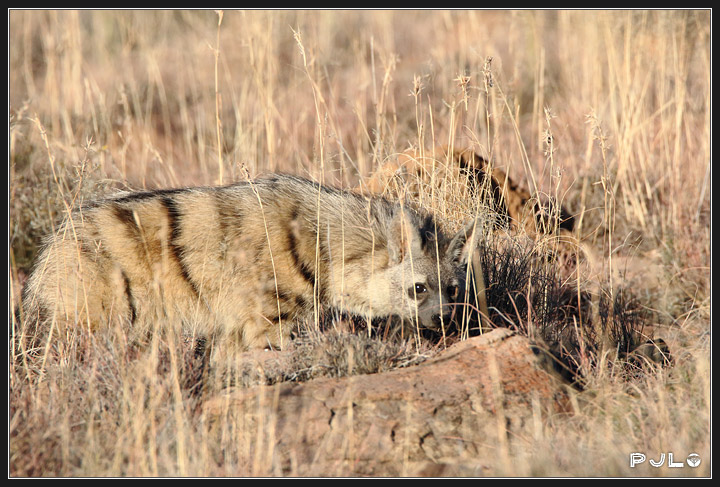
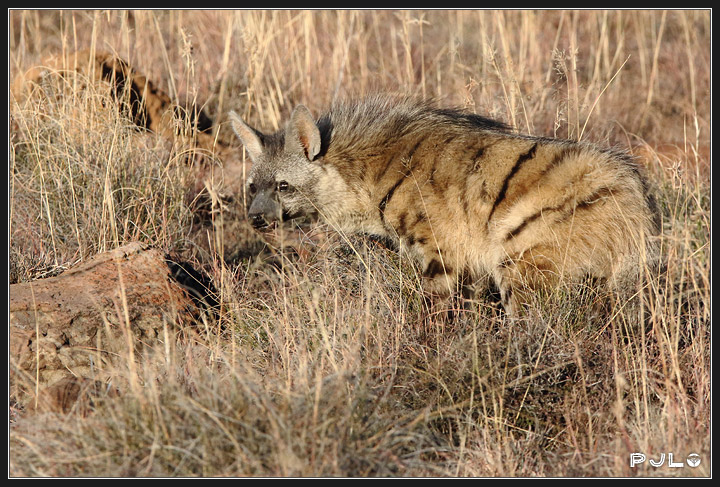
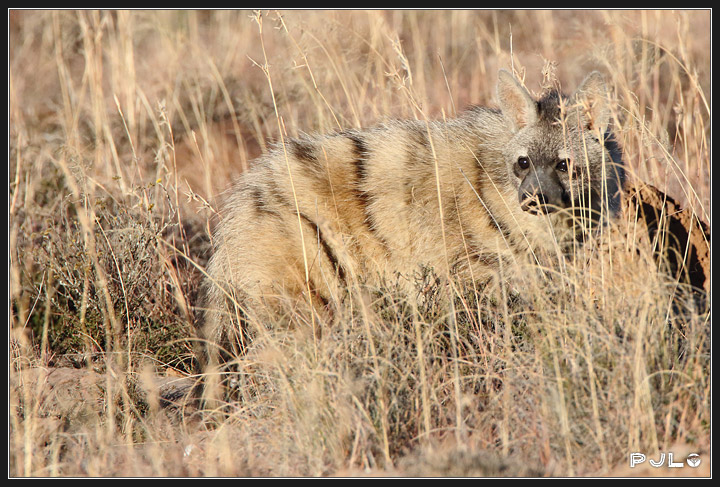
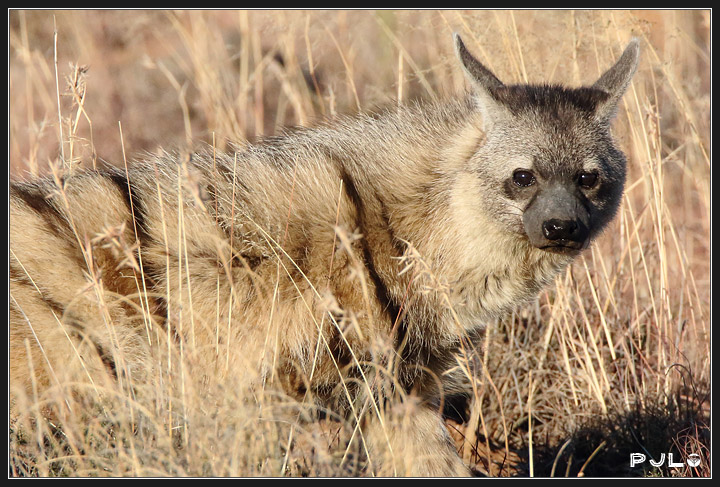
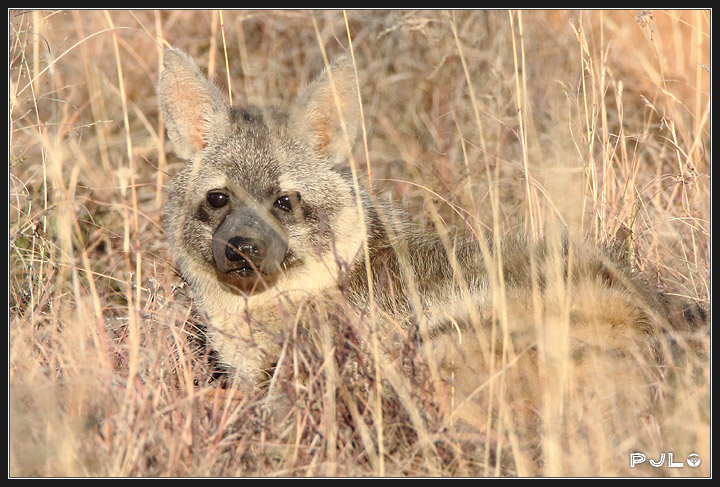





- Lisbeth
- Site Admin
- Posts: 67384
- Joined: Sat May 19, 2012 12:31 pm
- Country: Switzerland
- Location: Lugano
- Contact:
Re: Aardwolf
Wow!
Thank you PJL
Thank you PJL
"Education is the most powerful weapon which you can use to change the world." Nelson Mandela
The desire for equality must never exceed the demands of knowledge
The desire for equality must never exceed the demands of knowledge



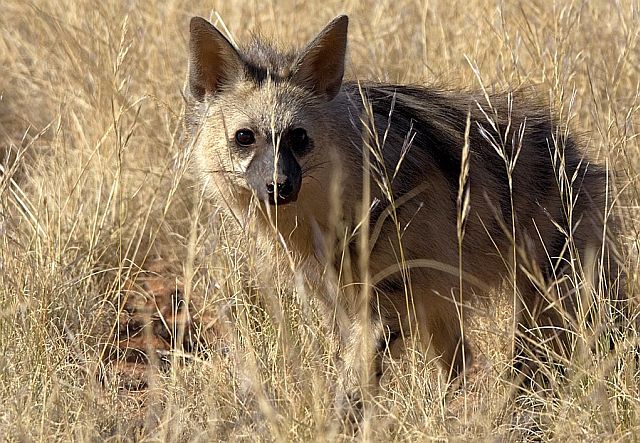 Namib Rand
Namib Rand